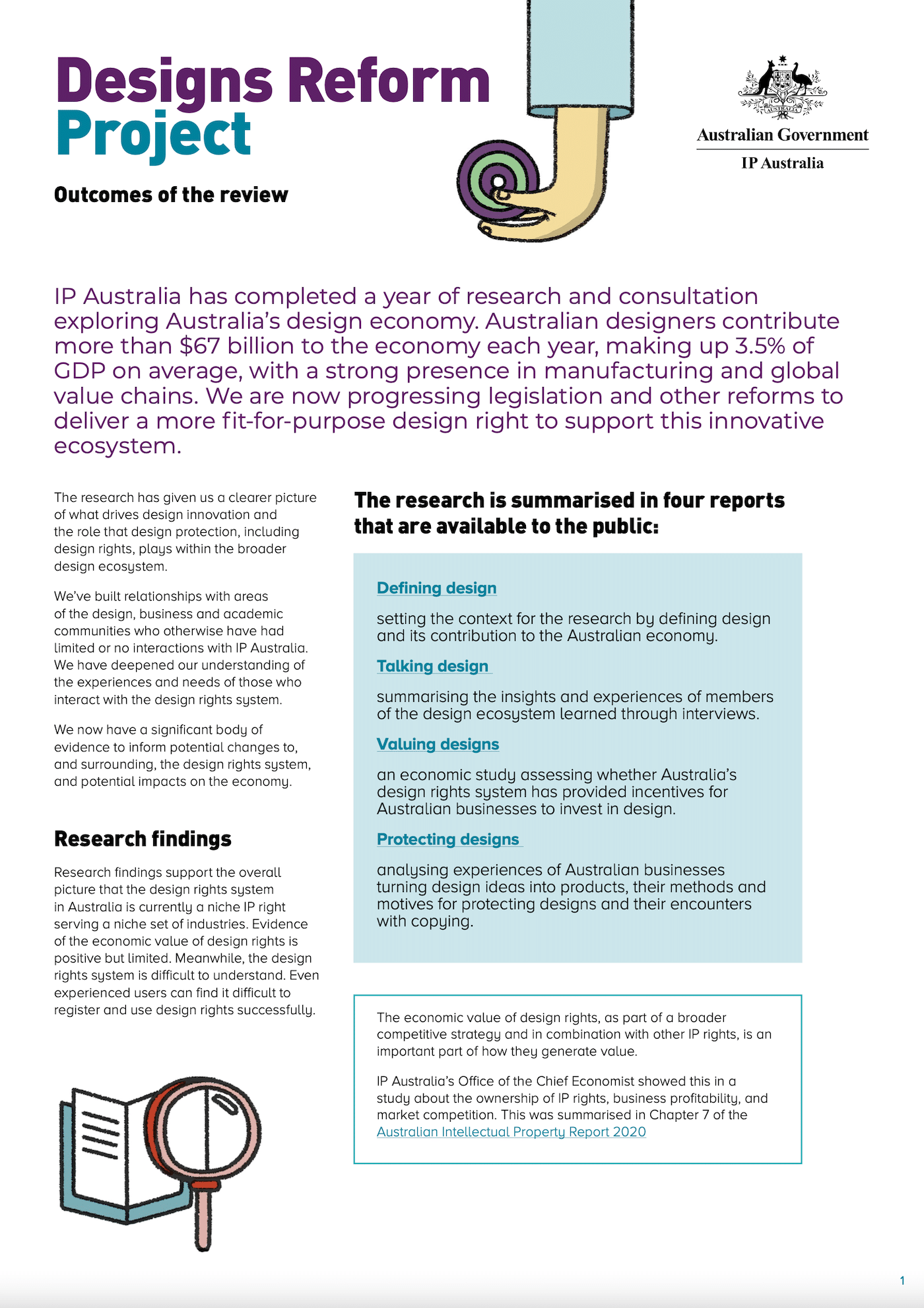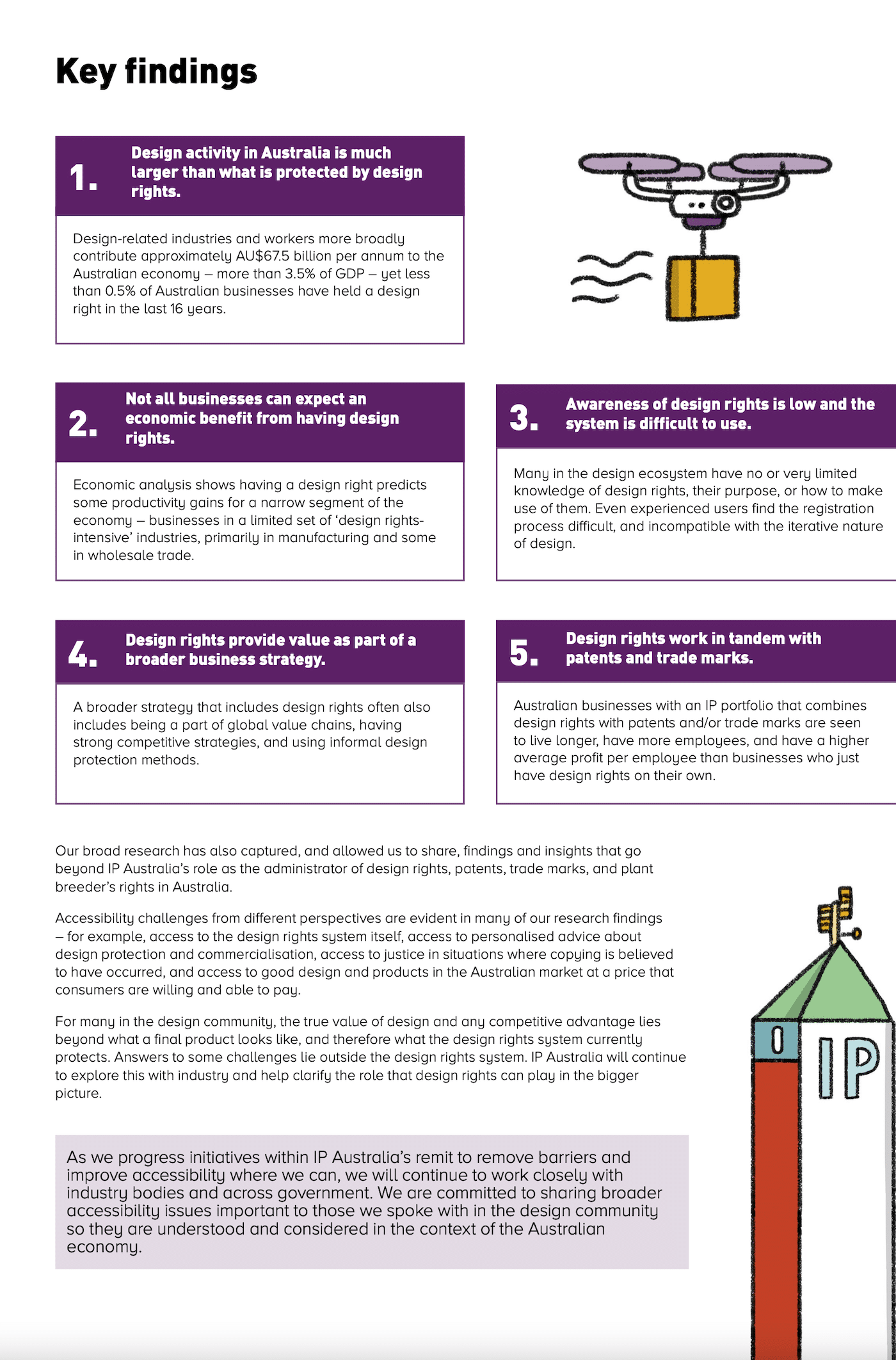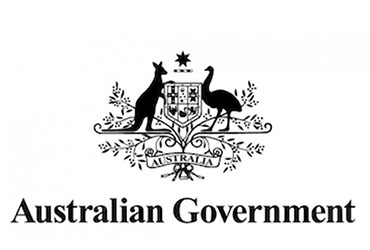What a great way to round off this challenging year – finally, tangible progress from our ongoing consultation with IP Australia, with a Bill presented in Parliament proposing amendments to the Designs Act.
‘Short-term wins’ identified by IP Australia during the Designs Review have now been tabled, and once approved, this is great news for the furnishing sector!
QUICK LINKS:
The Designs Amendment (Advisory Council on Intellectual Property Response) Bill 2020 was introduced into the Senate and is currently before Parliament for consideration.
The Bill is divided into seven schedules:
- Schedule 1 — GRACE PERIOD // Provides a period of 12 months for filing a design application after it is first disclosed.
- Schedule 2 — PRIOR USE // Protects third parties from infringement of designs if they started using a design before an application for registration is filed.
- Schedule 3 — FLEXIBILITY // Removes the option to publish a design without registration and simplifies the process of requesting registration.
- Schedule 4 — PROTECTION // Protects ‘innocent infringers’ who infringe a design between filing and registration but have no way to know the design is protected.
- Schedule 5 — LICENSEES // Allows exclusive licensees of design rights to take action against infringers without needing to rely on the design’s owner.
- Schedule 6 — FEWER APPLICATION DEADLINES // Streamlines the process for changing and specifying formal requirements for design applications.
- Schedule 7 — HOUSEKEEPING // Makes minor technical changes to clarify some matters in design legislation.
TIMELINE:
If the Bill passes Parliament, the various schedules of the Bill will commence:
|
|
|---|---|
|
|
|
|
 1: Grace period – 12 months (not the recommended 6 months!)
1: Grace period – 12 months (not the recommended 6 months!)
The recommendations from the 2015-17 ACIP Inquiry initially recommended a 6-month grace period, a recommendation that was accepted by the Federal Government.
During our ongoing consultation to both the Designs Review team and the Policy teams, the ADA strongly advocated for a minimum of 12 months that will align Australia with 100+ trading partners.
The 12-month grace period will protect designers who publish their designs before filing for protection (design registration). This covers products being released to social media (or similar) accidentally or because they did not know that they needed to file for protection before publishing.
Disclosures made up to 12 months before the priority date will be disregarded when examining a design for newness and distinctiveness.
Designers must file for a design right within 12 months of publically showcasing new work to receive the benefits of the grace period. For example, this means a designer who may unintentionally publish a design on social media will still be able to seek protection for their design within 12 months.
“During our ongoing consultation to both the Designs Review team and the Policy teams, the ADA strongly advocated for a minimum of 12-months, that will align Australia with 100+ trading partners, and we are thrilled with this outcome!”
If the design is owned by a person other than the designer (e.g. a commissioning brand), disclosures of the design by those bodies may also be disregarded under the grace period. Disclosures derived from the designer or owner can also be disregarded, even if not directly published by the designer or owner (e.g. publication by a marketing company authorised by the owner).
Publications of designs protected by foreign and international design offices, will not be eligible for the grace period. This topic will be explored once the solutions phase commences in 2021.
2: Infringement exemption for prior use
An infringement exemption is aimed to protect third parties against infringing someone else’s design if they start using a design before the priority date of a registered design.
The purpose of this reform is to balance the rights of designers and third parties after the introduction of the grace period, given that third parties may not be aware of a designer’s intent to file a design application within the 12-month grace period. It also protects designers who independently create but do not register a design.
A person who starts using a design before the priority date of its application for registration will be able to continue using, making, importing and selling products in respect of which the design is registered without infringing the design right.
Users who have legally acquired products from a prior user will also be able to use or sell on those products without infringing the design. However, these acquirers will not gain right to make or import such products. They will also not have the right to use or sell products other than those acquired from a prior user or the design owner.
3: Registration of designs – removal of publication option
In short, this means that a newly registered design can request a 6-month delay on IP Australia officially ‘publishing’ the approved design to allow the applicant to retain trade secrets until the official launch.
This will also reduce the number of application deadlines, part of streamlining the design registration process.
4: Relief from infringement before registration
Extending the current ‘innocent infringer’ defence is designed to provide relief from infringement to third parties who may unknowingly infringe a design registration in the period between the filing date of a design application and the date of registration.
During this period between filing and registration, the design is not publicly available on the Register of Designs. This means that even a third party conducting a diligent search may not be able to know that a design has been protected, and there is a risk of infringement.
To benefit from the defence, an alleged infringer must demonstrate that they did not know and had no reasonable way to know that an application for design registration existed. The defence will, therefore, not apply where a designer has advised the public of their intent to seek design registration or otherwise puts alleged infringers on notice about the design application.
In such cases of innocent infringement, a court will now have the discretion to refuse to award damages, reduce damages, or award an account of profits.
5: Right of exclusive licensee to bring infringement proceedings
An exclusive licensee is licensed to all the rights of a design in Australia to the exclusion of all others, including the owner of the design.
Currently, only the owner of a design has the right to bring infringement proceedings. This change will ensure exclusive licensees can enforce the design rights they have paid for and licensed, as they will likely suffer the most harm from a design infringement.
“For Example // Nick Rennie might own the design registration for the WYRIE marble table licensed to NEW VOLUMES by ARTEDOMUS. Should this table be copied, ARTEDOMUS are now able to act directly”
When an exclusive licensee starts infringement proceedings, the owner will have to be joined to proceedings as a defendant unless they are joined as a plaintiff. This serves to inform the owner about the proceedings and gives them the option of playing a role or not.
6: Formal requirements
Schedule 6 will streamline and modernise the process for updating the formal requirements for design applications, allowing the rules to be easily adapted to keep pace with changing technology.
This amendment will give the Registrar of Designs the power to specify formal requirements for design applications by written determination, replacing the currently outdated requirements.
IP Australia will publish a determination about formality requirements before the commencement of this Schedule.
7: Other amendments
Schedule 7 will make several minor technical corrections and improvements to the Act to clarify and simplify the designs system. T
/////////////////////////////////////////
Consultation
ACIP consulted extensively on these issues as part of its review of the designs system.
In 2019 we sought stakeholder views on several options that implement those recommendations accepted by the government from the ACIP Report.
In 2020 we released an exposure draft of the Bill and regulations to seek stakeholder views.
Find out more about our Designs Amendment (ACIP Response) Bill 2020 consultation.
/////////////////////////////////////////
WANT MORE: Key findings from the Designs Review
ADA links to each of the four IP Australia reports – here.



SUPPORT THE ADA // Become a member
JOIN THE ADA® – HELP STOP DESIGN THEFT!
AUTHENTIC DESIGN ALLIANCE® Members directly enable our advocacy and education – please support our campaigns for Australian IP Reform for the design sector by joining the ADA®
Find out more HERE (desktop view) or HERE (device view)
/////////////////////////////





